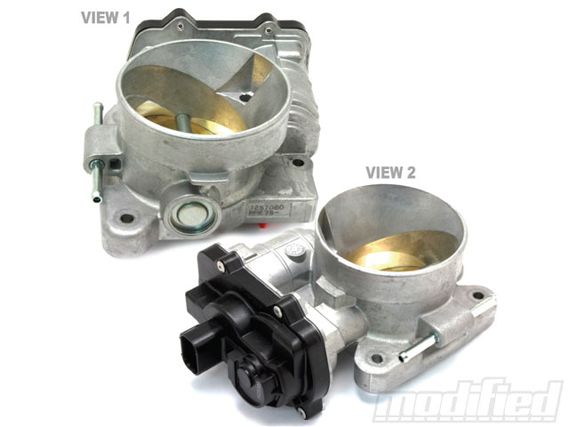 | Driver Disconnect - Tech Talk
| Driver Disconnect - Tech Talk
The more test-driving of new cars I do, the more I find myself becoming increasingly aware of the growing disconnect between car and driver. A big part of this is the way in which throttle-by-wire systems operate, some being almost undetectable, but the majority leaving me feeling like my right foot is being completely ignored by the computer controlling the throttle. Automakers are getting better with their drive-by-wire (DBW) logic and overall e-nanny programming, but DBW and the rapidly spreading use of stability control and other accident-avoidance systems beg the question, at what point do we cease to be driving the car at all and become mere passengers on a computer-controlled joy ride?
Part of what’s behind this shift to increased computer control is the desire to reduce the number of accidents on the road, which not only have a human cost but also a significant economic one. The human behind the wheel is, after all, the most unpredictable variable when looking at all the control systems on board a vehicle, so it makes sense that automakers and governments want to minimize the human aspect of control as much as they can from an engineering standpoint.
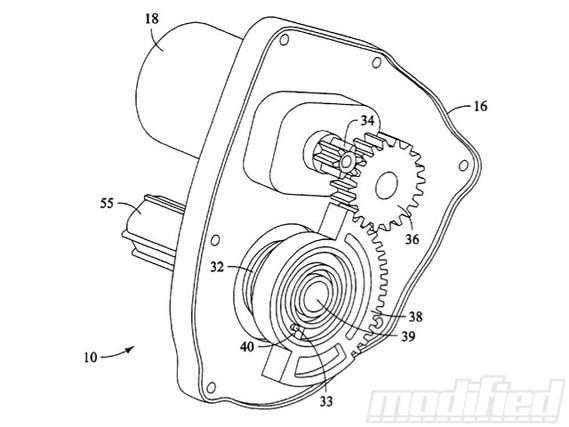 |
Driver Disconnect - Tech Talk
|
Driver Disconnect - Tech Talk
To be honest, I trust the software and hardware engineers behind DBW systems and their various counterparts (brake-by-wire, steering-by-wire, suspension-by-wire and so on) more than I trust many of the drivers out on the road, so from a “design to the lowest common denominator” perspective I’m glad to see these aerospace technologies being used by the auto industry. But from a driving enthusiast/racer perspective, where we want to feel as connected and in control of the machine as possible, these technologies are serious buzz kills. From closing the throttle a bit as the engine approaches its redline and then leaving it hanging open during the shift (done to reduce stress on the engine and reduce emissions) to lazy low- to mid-rpm throttle response (done to smooth out throttle inputs and increase fuel efficiency), throttle-by-wire doesn’t make for a happy right foot in any sort of high-performance environment.
What can be done about it? There are a couple of options to work around the annoying behaviors of throttle-by-wire systems, one being to convert to a cable throttle setup and the other being intercepting the DBW signal and inserting a more performance-oriented algorithm in its place.
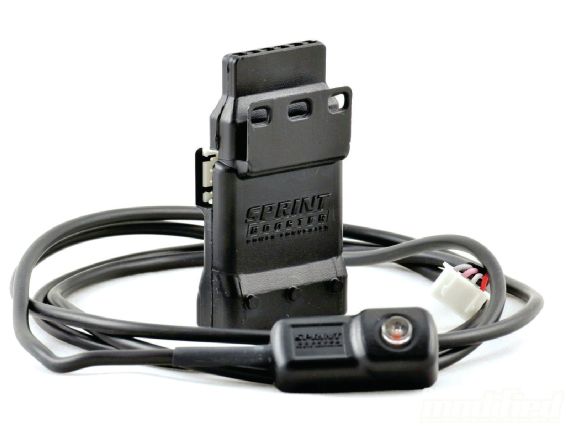 |
The Sprint Booster intercepts the DBW throttle signal and modifies it for faster throttle response, especially off the line and while transitioning from cruising to full throttle.
|
The Sprint Booster intercepts the DBW throttle signal and modifies it for faster throttle response, especially off the line and while transitioning from cruising to full throttle.
In the K-swapped Honda community, it’s commonplace to convert DBW K20Z and K24 engines to a K20A cable-controlled throttle body (or a larger-bore aftermarket equivalent from companies including Skunk2 and Hybrid Racing). This conversion is pretty straightforward, since adapter plates exist to bolt up a cable throttle body to the various K-series intake manifolds out there. Karcepts even makes a billet throttle cable bracket that eliminates the interference problem that comes with the OE cable bracket and allows for the use of a shorter throttle cable (making for a cleaner install). If you’re using a K20A engine harness for this conversion, you also need to swap out a couple of sensors (crank position and oil pressure) to get everything to be plug and play, but all in all it’s a very doable conversion and is well documented on the good old interweb. Cable throttle conversions for just about every type of DBW engines are also well documented if you dig deep enough — from LS1 swaps to VQ35-swaps.
The other option is to intercept the DBW throttle signal and modify it. The simplest device I’ve seen to do this with is the Sprint Booster. This tiny plug-and-play device literally plugs in between the OEM DBW module on the throttle pedal and the factory wiring harness. The little black box then measures and converts the signal with a more aggressive one, designed to quicken throttle response and increase pedal sensitivity. This helps deliver faster off-the-line response, as well as situations where you quickly go from a cruising throttle position to wide open (like during a passing maneuver). The latest version of the Sprint Booster even has three built-in settings you can choose from: Factory mode (deactivates the unit), Sport mode (improves throttle response, but still does some smoothing) and Race mode (even faster throttle response and no smoothing). I personally have not driven a car equipped with a Sprint Booster, but it’s an intriguing example of how the aftermarket can liven up the driving experience in DBW cars.
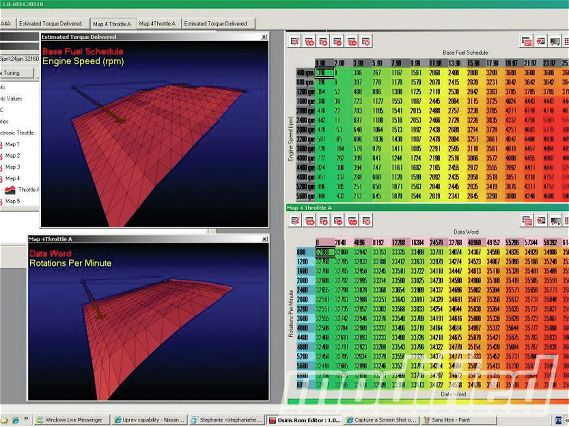 |
With re-flash packages like Uprev’s Osiris for the 350Z and G35, you’ve got access to throttle position maps so that you can tune out some of the unwanted characteristics of the factory DBW system.
|
With re-flash packages like Uprev’s Osiris for the 350Z and G35, you’ve got access to throttle position maps so that you can tune out some of the unwanted characteristics of the factory DBW system.
Another approach to retuning DBW throttle behavior is to re-flash the factory ECU to tune out some of the quirks of DBW throttles. Having owned and modified an Infiniti G35 6MT sports coupe (some of you will remember our white ’06 project car), an Uprev Osiris tuner package (including a data logging and diagnostics tool, map switching, a flash utility and a ROM editor) did wonders with respect to its DBW throttle behavior. One of the biggest annoyances with VQ-powered vehicles is the way the ECU prevents a fully open throttle as you approach the fuel cut/rev limiter. This actually robs a surprising amount of top-end horsepower, and when you combine this fix with some fine-tuning of the ignition and fuel maps, the end results can be serious power gains across the entire rpm range (we picked up 11 whp on the top end).
The most complete approach to retuning DBW systems for maximum performance is replacing the factory ECU with an aftermarket solution. MoTeC, for example, has a DBW module that can be added to many of its ECU packages for a totally customizable solution. With this approach, you have full control over the step motor position (that opens and closes the throttle) using a PID algorithm that’s tuned using MoTeC’s DBW4 Manager software. This system uses two separate sensors to ensure that a false position reading does not cause inadvertent opening of the throttle (if the two sensors ever disagree, the throttle is shut down). Of course, a system like this requires a highly skilled tuner and a big budget, but it can be a very powerful tool in the right hands, especially when combined with MoTeC’s other by-wire products (like its traction control multiplexer and diff controller).
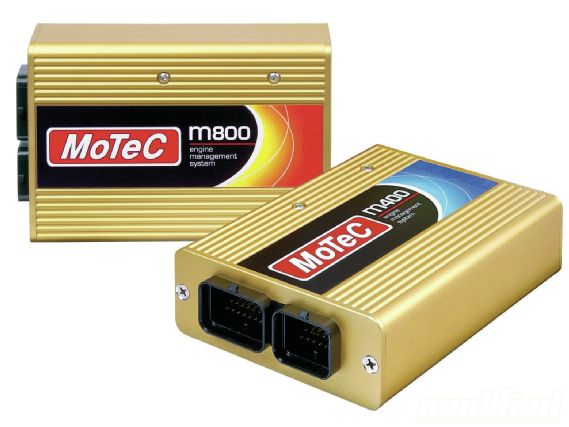 |
MoTeC’s DBW4 module allows for even more sophisticated control of electronic throttles when linked to one of its ECUs, like the popular M400 or M800.
|
MoTeC’s DBW4 module allows for even more sophisticated control of electronic throttles when linked to one of its ECUs, like the popular M400 or M800.
Although there’s real upside to DBW technology, including fewer moving mechanical parts (that can wear out or require more frequent servicing) and more accurate throttle and fuel control (meaning improved fuel economy and reduced emissions), there’s still a lot of room for improvement with respect to driving feel. Some high-performance machines like the R35 GT-R make very good use of DBW by sharpening up throttle response as you move from Sport mode up to R mode, and related by-wire technologies also allow for some pretty impressive launch control and non-invasive stability control.
As the saying goes, software is only as good as the programmers writing it, and the programmers are pretty damn amazing in the case of cars like the GT-R. But for those of us driving less cutting-edge machines with far-from-optimal DBW behavior, thankfully, we do have a variety of aftermarket approaches to satisfying our right foot’s needs.
Send your feedback to dpratte@modified.com
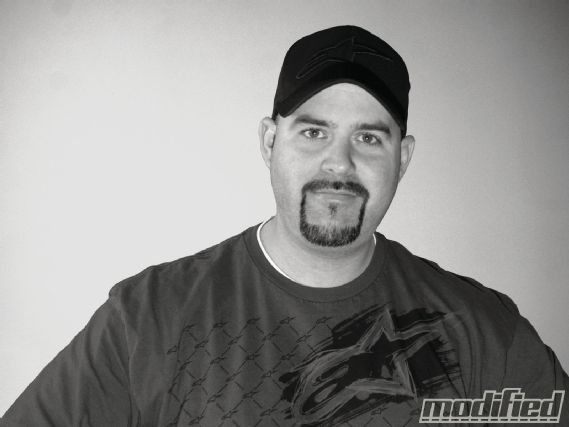 |
Driver Disconnect - Tech Talk
|
Driver Disconnect - Tech Talk
